Captains and crew
The Inlander's first captain was Joseph Bucey, who had been the pilot of the Hazelton . Some of the other officers were Robert Ryder, who was the chief engineer and Jerry Cunningham, the ship's mate. Wiggs O'Neill was the purser. O'Neill would become the foremost historian on the Skeena River sternwheelers and in his later years would write Steamboat Days on the Skeena River and Whitewater Men of the Skeena. Wiggs Creek near Smithers is named in his honour. [3]
Captain Bucey left the Inlander in 1911 and appeared the following year as the captain of the BC Express on the Fraser River.
For the rest of the 1911 season and through to her final voyage in the fall of 1912, the Inlander was piloted by Captain John Bonser. It was fitting that Bonser would pilot the last sternwheeler on the Skeena River, as he had pioneered it twenty years earlier in 1892 for the Hudson's Bay Company in the Caledonia, naming many of the rapids and canyons along the route. The Inlander would be the last of many notable riverboats under Bonser's command, among them, the Nechacco and the Northwest. [4]

Barnard's Express, later known as the British Columbia Express Company or BX, was a pioneer transportation company that served the Cariboo and Fraser-Fort George regions in British Columbia, Canada from 1861 until 1921.
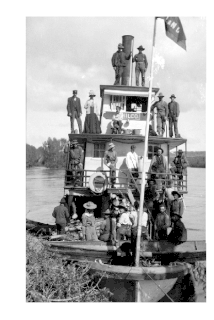
Twelve paddlewheel steamboats plied the upper Fraser River in British Columbia from 1863 until 1921. They were used for a variety of purposes: working on railroad construction, delivering mail, promoting real estate in infant townsites and bringing settlers in to a new frontier. They served the towns of Quesnel, Barkerville and Fort George. Some only worked the Fraser from Soda Creek to Quesnel, while others went all the way to Tête Jaune Cache or took the Nechako River and served Fort Fraser and beyond.

Owen Forrester Browne was a paddle steamer captain in British Columbia, and Alberta, Canada. He was born in New Westminster and worked on the lower Fraser and Yukon River sternwheelers before coming to the upper Fraser River in the early 1900s.

The Skeena River is British Columbia’s fastest flowing waterway, often rising as much as 17 feet (5.2 m) in a day and fluctuating as much as sixty feet between high and low water. For the steamboat captains, that wide range made it one of the toughest navigable rivers in British Columbia. Nevertheless, at least sixteen paddlewheel steamboats plied the Skeena River from the coast to Hazelton from 1864 to 1912.
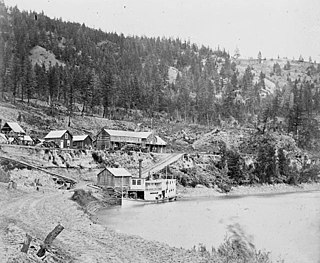
The Enterprise was a passenger and freight sternwheeler that was built for service on the Soda Creek to Quesnel route on the upper Fraser River in British Columbia. It was built at Four Mile Creek near Alexandria by pioneer shipbuilder James Trahey of Victoria for Gustavus Blin-Wright and Captain Thomas Wright and was put into service in the spring of 1863. Her captain was JW Doane. The Enterprise was the first of twelve sternwheelers that would work on this section of the Fraser from 1863 to 1921. Though she wasn’t large, she was a wonderful example of the early craft of shipbuilding. All of the lumber she was built from was cut by hand and her boiler and engines had been brought to the building site at Four Mile packed by mule via the wagon road from Port Douglas, 300 miles away.
Victoria was a passenger and freight sternwheeler that was built for service on the Soda Creek to Quesnel route on the upper Fraser River in British Columbia. She was built at Quesnel by pioneer shipbuilder James Trahey of Victoria for Gustavus Blin-Wright and Captain Thomas Wright and was put into service in the spring of 1869 to augment the service of Enterprise also built by Trahey for the Wrights. Although the Victoria's hull was new, her engines and boiler had originally been in the Prince of Wales from Lillooet Lake.
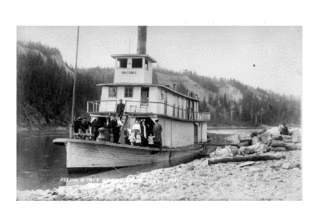
Quesnel was a sternwheeler first launched in May 1909 at Quesnel, British Columbia to serve the Soda Creek to Fort George route of the upper Fraser River.

The Nechacco sternwheeler was built for service on the Soda Creek to Fort George route on the upper Fraser River in British Columbia. She was owned by the Fort George Lumber and Navigation Company. The partners in this company were Nick Clark and Russel Peden of South Fort George, who operated a sawmill there. Nick Clark also owned the lots in that townsite and was offering them up for sale. The new steamer was intended to bring prospective property buyers to Fort George and to furnish them with supplies.

The Fort Fraser was a small sternwheeler owned by the Fort George Lumber and Transportation Company a partnership originally held by Nick Clarke and Russell Peden from the Fort George town-site of South Fort George. The Fort Fraser was intended to be a small prospecting craft that could service not only the Soda Creek to Fort George section of the upper Fraser River but also the Nechako River and some of its tributaries, enabling her to serve her namesake town of Fort Fraser.

The sternwheeler Chilcotin was built for the Soda Creek to Fort George route of the upper Fraser River. She was built by shipbuilder Donald McPhee for the Fort George Lumber and Navigation Company, which was a partnership held by Nick Clarke and Russell Peden of the South Fort George town-site of Fort George. Chilcotin was the largest of the company's three sternwheelers and was intended to run as competition against the BC Express Company's new luxury sternwheeler, BX. Chilcotin had main, promenade and Texas decks, hot and cold running water and stateroom accommodation for fifty.

The Conveyor was one of five sternwheelers built for the use on the Skeena River by Foley, Welch and Stewart for construction work on the Grand Trunk Pacific Railway. The other four were the Operator, the Skeena, the Distributor and the Omineca. Three of these, the Conveyor, the Operator and the Distributor were built at Victoria, British Columbia in 1908 by Alexander Watson Jr.

The Operator sternwheeler was one of five sternwheelers built for the use on the Skeena River by Foley, Welch and Stewart for construction work on the Grand Trunk Pacific Railway. The other four were the Conveyor, the Skeena, the Distributor and the Omineca. Three of these, the Conveyor, the Operator and the Distributor were built at Victoria, British Columbia, in 1908 by Alexander Watson Jr.

The BC Express was a stern wheel paddle steamer (sternwheeler) that operated on the Fraser River in British Columbia, Canada, from 1912 to 1919. The BC Express was built for the BC Express Company by Alexander Watson, Jr to work on the upper Fraser River between Tête Jaune Cache and Fort George during the busy years of Grand Trunk Pacific Railway construction. The BC Express Company hired Captain Joseph Bucey, an experienced Skeena River pilot, to be her master.
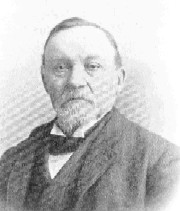
William Moore was a steamship captain, businessman, miner and explorer in British Columbia and Alaska. During most of British Columbia's gold rushes Moore could be found at the center of activity, either providing transportation to the miners, working claims or delivering mail and supplies.
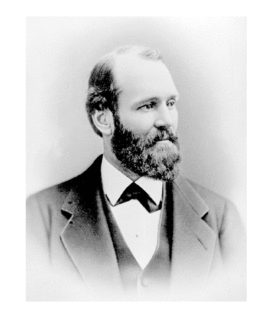
Gustavus Blin Wright was a pioneer roadbuilder and entrepreneur in British Columbia, Canada. His biggest achievement was building the Old Cariboo Road to the Cariboo gold fields, from Lillooet to Fort Alexandria, but he was also a partner in a freighting firm that operated on the Douglas Road, he ran a toll bridge at Bridge River, near Lillooet, and built part of the road from Quesnel to Barkerville. He was also the original owner of the town of 70 Mile House.

The Skeena sternwheeler was one of five sternwheelers built for the use on the Skeena River by Foley, Welch and Stewart for construction work on the Grand Trunk Pacific Railway from 1909 until 1911. She was built at Robertson's yard in Coal Harbour, Vancouver, in 1908. The other four were the Conveyor, the Operator, the Distributor and the Omineca. Three of these, the Conveyor, the Operator and the Distributor were built at Victoria, British Columbia in 1908 by Alexander Watson Jr.

John Henry Bonser was a steamship captain from Oregon, United States and British Columbia, Canada. He piloted dozens of sternwheelers over his 40-year-long career and pioneered many rivers in the Pacific Northwest.
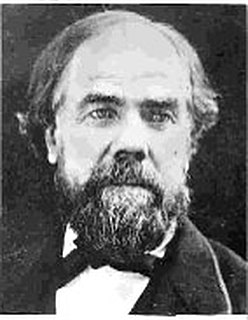
William Irving was a steamship captain and entrepreneur in Oregon, US and British Columbia, Canada. The Irvington neighborhood in Portland, Oregon is named in his honor and in New Westminster, British Columbia his home, "Irving House", is now a heritage site. He was one of the earliest pioneers of steamer travel in the Pacific Northwest and is remembered as one of the most successful and popular captains of the era.

Hazelton was a sternwheeler that worked on the Skeena River in British Columbia, Canada from 1901 until 1912. Her first owner was Robert Cunningham who ran a freighting business that served the communities along the Skeena River.

Mount Royal was a sternwheeler that worked on the Skeena River and Stikine Rivers in British Columbia, Canada, from 1902 until 1907. She was named after Lord Strathcona who was also known as Donald Smith, 1st Baron Strathcona and Mount Royal.


















